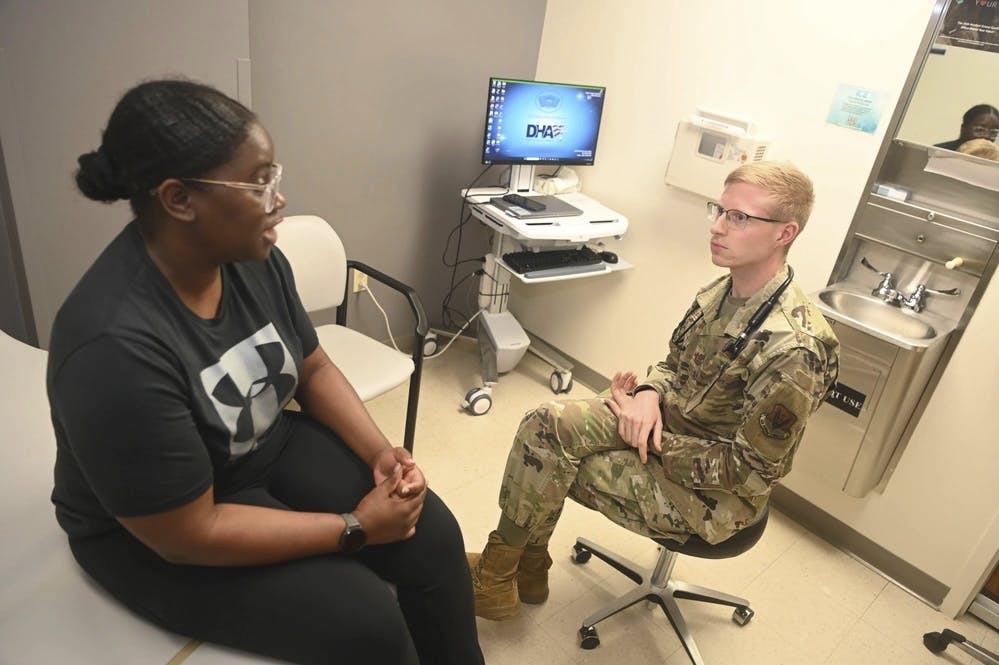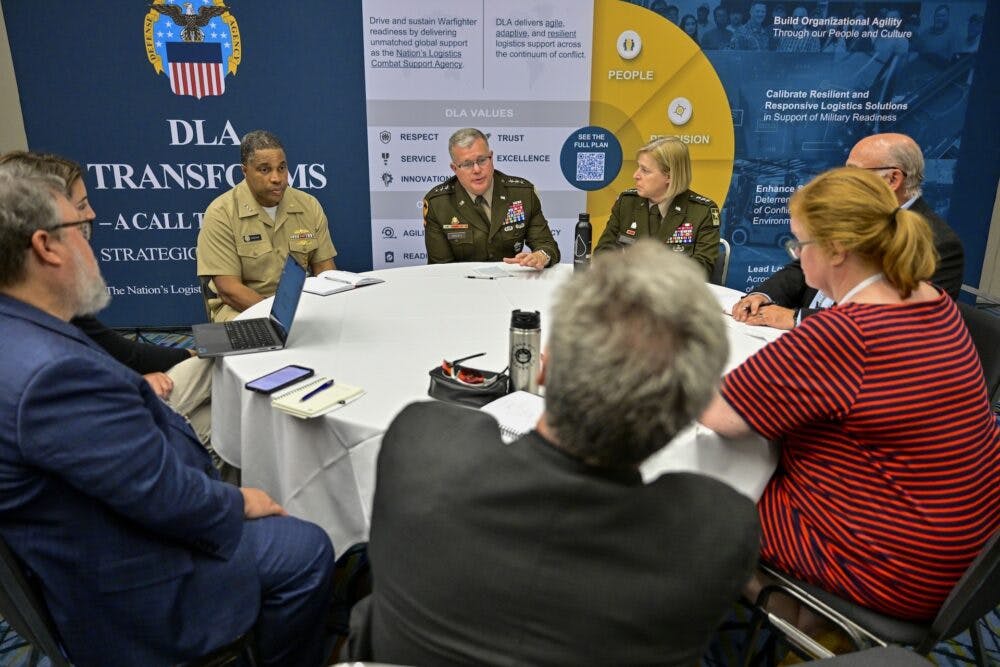Air Force Hones in on User Experience in Modernization
Regular user surveys and constant monitoring go a long way.

Surveying airmen once a week about their user experience with IT and monitoring software applications to catch bugs, crashes and other issues is transforming user experience efforts at the Air Force.
“Most of the time we use the term ‘warfighter effectiveness’ because that’s really what the term ‘user experience’ is about,” said Air Force Chief Experience Officer Colt Whittall at a FedInsider webinar last week. “It’s about speed, agility, reliability, designed with you for the way you use it in the real world. If we do all of that and it’s highly effective, response, secure, you get warfighter effectiveness, and that’s really our mission.”
Surveying users, collecting data on IT performance and blending teams with engineering expertise and sharp functional skills will transform the warfighter experience, said Whittall and Director of Defense Information Systems Agency’s (DISA) Digital Capabilities and Security Center Jason Martin.
Whittall, who brings decades of industry experience to the role, said improving warfighter effectiveness anchors all user experience initiatives at the department.
“One of the things that was crystal clear when I signed up for this was, we weren’t really measuring how our IT contributed to warfighter effectiveness, and we needed to measure this and look at the data and feedback we were getting,” he said.
Whittall leads two initiatives aimed at addressing common user experience issues for airmen. One is an “IT pulse,” which surveys 2% of the Air Force user base once per week. The program launched in January 2020, so they have almost two years of data to mine for user experience issues and potential improvements.
The program has been “very effective,” Whittall said.
“That sounds kinda crazy, but this is what we do in the commercial world,” he added. “It’s the ‘voice-of-the-customer’ program. We even use one of the same platforms they do. In some cases where we thought we would see a big benefit, it hasn’t really produced, and that’s interesting, that’s sobering, so then we think ok we’ve got to go in a different direction.”
The other initiative, which launched recently, is a digital experience monitoring tool measuring the most active IT endpoints on the service’s 65 largest bases.
“It tells us exactly what airmen are experiencing as they interact with our software and tools, when they boot up a machine in the morning, go to applications to do their work, when it crashes and how often, we know exactly what that is and we can respond to it,” Whittall said. “It allows us to drill in and produce warfighter effectiveness and reliability and responsiveness.”
Martin said surveying user groups and soliciting industry input are “the answer” to enhanced user experience. But user experience efforts can easily fail when the end goal isn’t kept at the forefront of the project.
“We try to factor the people experience into everything we do,” Martin said at the event. “With the wide variety of programs we have it’s not one size fits all. It’s really about, what do you need to do to be productive? What are we trying to accomplish and provide to the warfighter and end user? If we talk about mobility, that’s a totally different dynamic depending on if you’re on the battlefield and need capabilities on a mobile phone.”
As components of DOD continue to digitize and connect more devices to the network, IT and user experience leaders have a wealth of data at their fingertips highlighting user failures, successes or issues that could be improved.
“Everybody is a sensor and data receiver,” Martin said. “There are varying degrees of maturity across the programmatic landscape. With some of our newer technologies, we need to think about who the user base is and how to approach that.”
This is a carousel with manually rotating slides. Use Next and Previous buttons to navigate or jump to a slide with the slide dots
-

The Next AI Wave Requires Stronger Cyber Defenses, Data Management
IT officials warn of new vulnerabilities posed by AI as agencies continue to leverage the tech to boost operational efficiency.
5m read -

Federal CIOs Push for ROI-Focused Modernization to Advance Mission Goals
CIOs focus on return on investment, data governance and application modernization to drive mission outcomes as agencies adopt new tech tools.
4m read -

Agencies Push Data-Driven Acquisition Reforms to Boost Efficiency
New initiatives aim to increase visibility of agency spending, improve data quality and create avenues to deploy solutions across government.
5m read -

Data Transparency Essential to Government Reform, Rep. Sessions Says
Co-Chair of the Congressional DOGE Caucus Rep. Pete Sessions calls for data sharing and partnerships to reduce waste and improve efficiency.
5m read -

DOD Can No Longer Assume Superiority in Digital Warfare, Officials Warn
The DOD must make concerted efforts to address cyber vulnerabilities to maintain the tactical edge, military leaders said at HammerCon 2025.
4m read -

DHA CDAO Spearheads Master Data Catalog to Boost Transparency
Jesus Caban plans to boost DHA's data maturity through a new master data catalog, governance frameworks and inventory of tech tools.
5m read -

IRS Makes Direct File Code Public as Lawmakers Debate Program’s Fate
The agency sees the Direct File source code as beneficial to government digital services despite what happens with it in proposed budgets.
5m read -

A Look at Federal Zero Trust Transformation
Recent developments from CISA and DOD show how government is advancing zero trust quickly.
20m read -

FEHRM CTO Targets Two-Year Cloud Migration for Federal EHR
Lance Scott touts new EHR tech advancements, including cloud migration, expanded data exchange and AI integration to improve care delivery.
4m read -

New Army Acquisition Plan Cites Autonomy, Predictive Analytics
Officials outline how the Army Transformation Initiative signals a broader shift toward efficiency with tech and acquisition reform.
4m read -

DOE National Labs Launch New AI Tools for Operational Efficiency
The Energy Department's National Laboratories are using AI to increase operational efficiency and drive research efforts forward.
3m read -

Human-AI Collaboration is Key to Secure Government Systems
Former CIA security chief emphasizes training and international standards for effective AI implementation.
23m watch
















